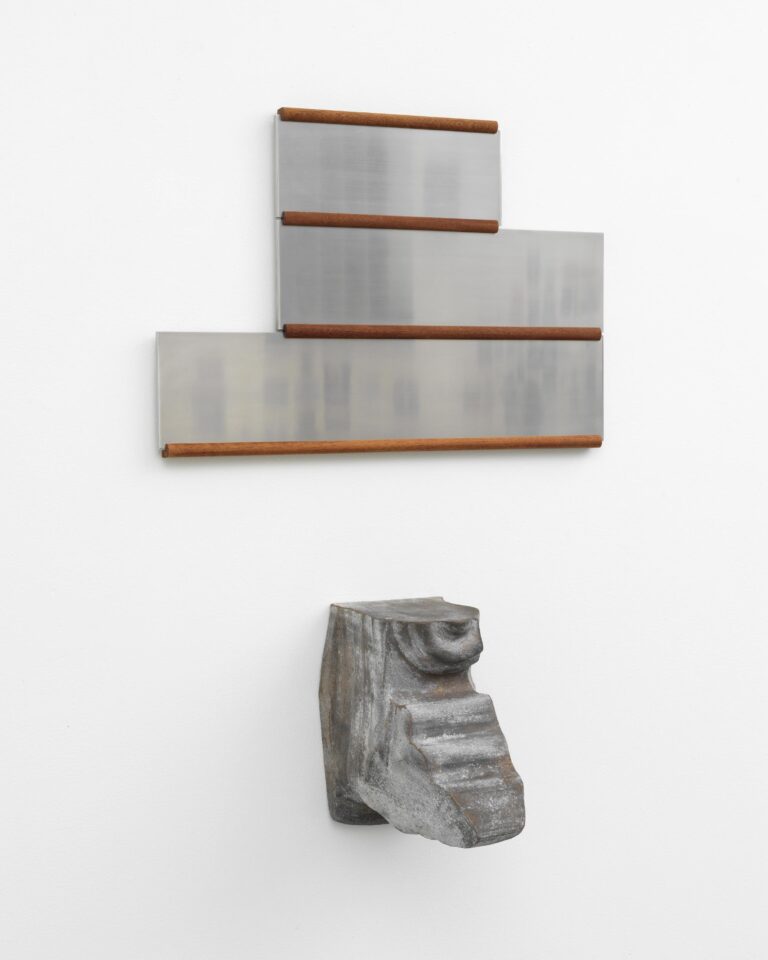Richard Rezac
HARLEQUIN
Gallery Openings—15 Sep 2023, 6 to 9 PM
For one who cites the reductionist ethos of traditional Japanese art and architecture and 60s minimalism, the jargon of Shakers and Native American craftmanship as key references, the title of this new exhibition might come as a surprise. At least I didn’t immediately associate Rezac’s carefully designed and crafted sculptures, their abstract forms, their exquisitely polished surfaces seemingly removed from any sign of physical labor, with Harlequin’s often hectic and clumsy bodily movements.

Richard Rezac, Mozart Mirror (after Loschenkohl), 2021, Courtesy the artist and Galerie Isabella Bortolozzi, Berlin
Yes, art history studies brought me back to Cocteau’s and Picasso’s iconographic treatment of this character, certainly more melancholic than the general representation of this clever servant with which I was familiar. Luckily, it soon became clear to me that more appropriate connections were possible. Patchwork was the magic word; abstraction followed right after. The costume of the needy child Harlequin originally was, in fact, a patchwork of different leftovers of cloth sewn together by hand and the concept of patchwork certainly applies to Rezac’s practice. Firstly, because his “sculptures are a conjunction, or aggregation, of two or more elements distinct in shape, material, and color” (James Rondeau), coming from different references to architecture, design, the history of painting and more. Secondly, because in each exhibition as well as in the present one, the artist selects a variety of works with no thematic or chronological consistency, but chosen because they appropriately function as a group in the spatial and atmospheric conditions they are presented.
Through time, Harlequin’s costume was subject to a process of abstraction that transformed the possibly chaotic assemblages of pieces of cloth donated from friends, to the present geometric and regular motive of rhombuses. Similarly, Rezac’s several yet often obscure and undeclared references are reproposed or summed up into a singular form through a process of careful abstraction. And so, it is easy to find a progression of elongated diamond patterns in some of the sculptures in the exhibition, while it would be less intuitive to find references to a Mozart silhouette, a Piranesi design, an Oregon mountain plateau, and the artist’s forearm, as Richard himself revealed could be found in the exhibition.
In Italy, probably more to the north, from where both the Harlequin’s character and myself come, we use the expression “arlecchinata” to define some very colorful juxtaposition of items to create one visual arrangement. Once more, one does not necessarily link any sentiment of bad-taste to Rezac’s practice, but the choice of this title for such an elegant parade of carefully hand-crafted objects, reveals not only a form of soft self-deprecation, but probably the ongoing struggle that Rezac has with his natural sense of beauty. An “arlecchinata” can certainly add a degree of awkwardness as a tool so as not to completely surrender to the suffocating embrace of elegance.
Text by Luca Cerizza
